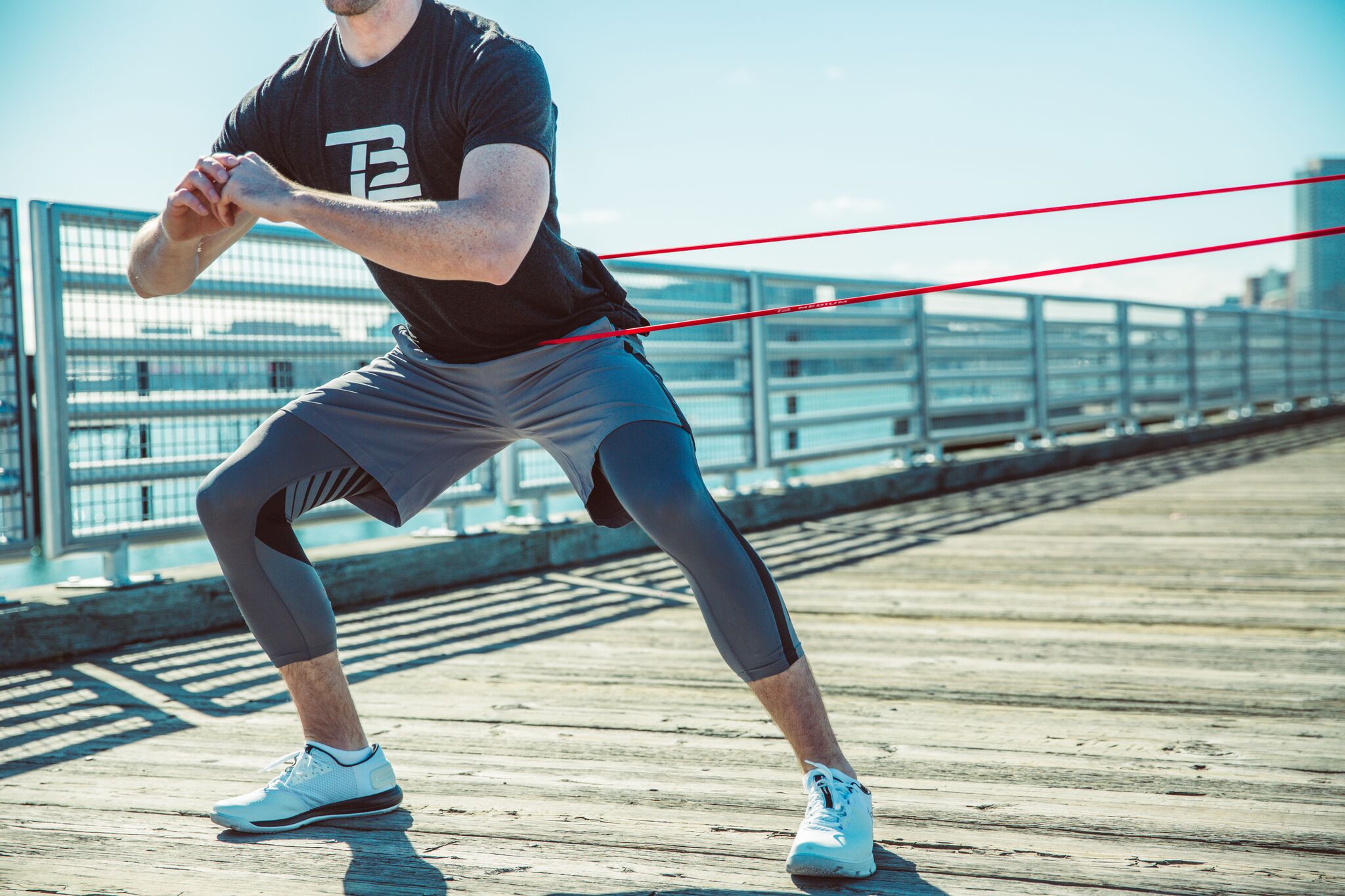Bands, not bandages
A lot of people scoff at resistance bands. If you’re one of them, you might think they’re only for people in rehabilitation programs or older people who can’t handle weights. Those misconceptions couldn’t be further from the truth.
Resistance band training is one of the best ways to maximize your muscles’ efficiency. They offer a wide, fluid range of motion, helping you build strength and power. Exercises using our TB12 Resistance Bands can be adapted to mimic almost any sport-specific movement, which allows for training at the speed of sport without the higher risk of overload and injury that are commonly associated with traditional methods of strength training. Used in tandem with pliability training, resistance bands create a balanced approach to working out that helps you strengthen your body while reducing the load on your muscles and joints.
So, how do you transition from weights to resistance bands? What does a resistance band training program look like? Let’s break it down.
TOM’S TAKE
 Tom Brady lifted weights throughout college and into the early years of his NFL career. In his book, The TB12 Method: How to Achieve a Lifetime of Sustained Peak Performance, he tells the full story of how he realized traditional weight training was leaving him more sore than he wanted to be.
Tom Brady lifted weights throughout college and into the early years of his NFL career. In his book, The TB12 Method: How to Achieve a Lifetime of Sustained Peak Performance, he tells the full story of how he realized traditional weight training was leaving him more sore than he wanted to be.
“Most of the time, my workouts left me hurting,” he wrote. “Sure, I was getting stronger, but I was a long way away from allocating the right proportion of my workout time to what could allow me to sustain success longer — namely, pliability and its amplifiers.”
Through his work with longtime Body Coach Alex Guerrero, co-founder of TB12, Brady began incorporating different tools and techniques. He has now been using resistance bands almost exclusively for more than seven years.
“The difference is profound,” he explained. “My muscles are more balanced and functional, especially for the movements I need to perform as an NFL quarterback. Resistance bands clearly work better for me.”
MAKE THE SWITCH TO TB12 LOOPED RESISTANCE BANDS
 A resistance band training program might feel odd or too easy for someone who has primarily exercised with weights during their time in their sport. If that’s you, don’t let the feeling fool you. Your body needs to get accustomed to bearing resistance rather than load, which is the major difference between bands and weights.
A resistance band training program might feel odd or too easy for someone who has primarily exercised with weights during their time in their sport. If that’s you, don’t let the feeling fool you. Your body needs to get accustomed to bearing resistance rather than load, which is the major difference between bands and weights.
Brady describes it like this: “Imagine your body is a pickup truck. It’s weighed down with a thousand pounds of bricks in its cargo bed. This is what weight lifting does to your muscles, ligaments, and joints. Now imagine your body as a pickup truck that’s towing a thousand pounds of bricks behind it. There’s minimal weight on your structure.”
Why put that excess load on your joints when you really don’t need to?
If you’re experienced with weights, switching to resistance bands doesn’t have to be difficult. Your favorite exercises, like deadlifts, chest presses, alternating rows, and squats, all have band-assisted variations that relieve the pressure on your body and allow your muscles to better maintain pliability.
Ready to make the switch to resistance band training? Get started with our TB12 Looped Resistance Band Kit (Starter) or take your training to the next level with our TB12 Looped Resistance Band Kit (Advanced).
TIPS FOR EFFECTIVE RESISTANCE BAND TRAINING
- Keep an eye on your form. Throughout an entire exercise set, your knees should be over your feet, your hips should be over your knees, and your core should be engaged. Work out in front of a mirror, with a buddy who can give you feedback, or with your phone recording your movements. That way, you can note and adjust issues with your form.
- Focus on core and glute stability. TB12 Body Coaches emphasize ground force production, or the ability to transfer energy from the ground, through the body, and into the function you’re performing. If you neglect to engage your core, you will not gain access to the full amount of strength and force available to you.
- Set a timer for twenty seconds. That’s how long you should aim to do each resistance band training exercise. If your form starts to break down before the timer goes off, stop. “Over time,” Brady wrote, “as you build up endurance and increase proficiency, you’ll find yourself doing the exercise for the full twenty seconds.”
Ready to start a customized workout plan using resistance bands? Check out the TB12 mobile app today.


